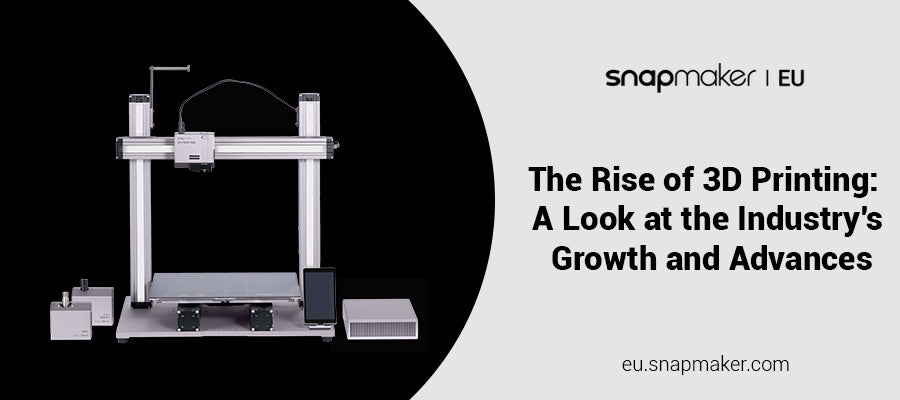The current state of the 3D printing industry is one of growth and innovation. Over the past few years, the use of 3D printing technology has expanded into a wide range of industries, including healthcare, aerospace, automotive, and consumer products. As a result, the global 3D printing market is expected to continue growing at a steady pace in the coming years.
One of the major drivers of this growth is the increasing affordability and accessibility of 3D printing technology. There are now a wide range of 3D printers available on the market at various price points, making it possible for individuals and small businesses to own and operate their own 3D printers.
In addition, the availability of advanced materials and improved 3D printing processes has also contributed to the growth of the industry. Today, 3D printers can use a wide range of materials, including metals, ceramics, and composite materials, allowing for the creation of complex and customized objects.
FDM 3D Printing
FDM (Fused Deposition Modeling) is a type of 3D printing technology that creates physical objects by depositing layers of melted plastic material. It is also known as FFF (Fused Filament Fabrication) because it works by extruding a continuous filament of material through a heated nozzle, which moves back and forth over the build platform to create the desired shape.
In FDM 3D printing, the model is created by slicing a 3D digital design into thin horizontal layers, which are then used to guide the movement of the nozzle as it deposits the melted material onto the build platform. The nozzle is heated to a high temperature in order to melt the plastic filament, which is typically made of a thermoplastic material such as ABS (Acrylonitrile-Butadiene-Styrene) or PLA (Polylactic Acid).
One of the main advantages of FDM 3D printing is that it is relatively inexpensive compared to other 3D printing technologies, and it can be used to create a wide range of objects with different shapes and sizes. It is also relatively easy to use, as it requires minimal setup and has a low learning curve.
Overall, the current state of the 3D printing industry is one of growth and innovation, with exciting developments and advancements in the technology. As the industry continues to evolve, we can expect to see even more sophisticated and advanced 3D printers on the market, opening up new possibilities and applications for 3D printing.
Snapmaker 2.0 A350T/A250T
The Snapmaker 2.0 A350T/A250T is a metal 3D printer that offers a range of features and capabilities for users who want to take their 3D printing projects to the next level. With its latest linear modules, the 3D printing module, and power module, the Snapmaker 2.0 A350T/A250T offers a faster and quieter printing experience than previous models.
In addition to 3D printing, the Snapmaker 2.0 A350T/A250T also includes a 1.6W laser 3D printer metal module with an in-built camera, allowing you to laser engrave a wide range of materials. The CNC carving module also allows you to CNC mill objects with precision and accuracy.
The 3D printer 30x30x30 also includes a user-friendly interface and clear instructions, making it easy to set up and operate. The product also comes with excellent customer support, providing users with the help they need to get started and to troubleshoot any issues that may arise.
